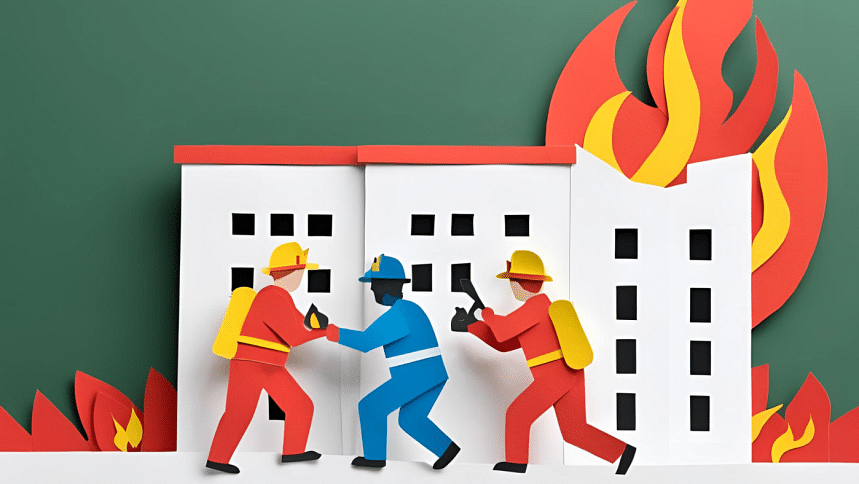The corporate firemen: How communications teams save the day

It starts with a spark—an offhand comment from a CEO, a leaked memo, or a social media post taken out of context. Within hours, the embers spread, and suddenly, a company's reputation is in flames.
Just as firefighters rush to extinguish fires and protect lives, communications teams serve as the corporate firemen, charged with containing reputational crises, shaping narratives, and ensuring businesses emerge stronger from the heat. Their work often goes unnoticed until the sparks fly, and then, suddenly, they are the difference between survival and disaster.
The first responders in crisis
Every organisation, no matter how well-structured, faces its moments of reckoning. A faulty product, an executive's slip of the tongue, a financial scandal—when the flames ignite, the communications team is the first on the scene, determining whether the company weathers the storm or crumbles in the court of public opinion.
Consider the 2010 Toyota recall crisis. Millions of vehicles had to be recalled due to accelerator defects, shaking consumer trust worldwide. This wasn't just an engineering failure but a battle for credibility.
Toyota's communications team acted swiftly, issuing public apologies, halting production, and launching a transparency-driven campaign. Their strategic engagement with the media and the CEO's visible commitment to quality helped control the fire before it engulfed the company's reputation.
After the Rana Plaza disaster, Bangladesh's garment industry faced a reputational catastrophe. Communications teams worked relentlessly to salvage the sector's standing, advocating for reforms, launching safety initiatives, and reassuring global buyers that the industry was taking corrective action. Without these behind-the-scenes efforts, Bangladesh's most critical export sector could have collapsed under international scrutiny.
Fire prevention: The internal shield
Not all crises start externally. Sometimes, they smoulder with—uncertainty during leadership transitions, employee unrest, or structural overhauls. In these moments, the communications team acts as the internal firefighting unit, quelling fears before they become a full-blown crisis.
Take mergers and acquisitions. Employees often fear job cuts and culture clashes. Here, the communications team, sometimes with support from HR's culture and engagement team, steps in with clear, strategic messaging that reassures staff, maintains morale, and prevents productivity from going up in smoke.
Or consider internal change management. A poorly communicated policy shift can trigger confusion and resentment. However, with a strong communications strategy, employees receive well-structured information that transforms resistance into acceptance.
The identity architects: Shaping the brand's flame
A company's reputation is not just about crisis management—it is about creating and sustaining an identity. Communications teams don't just put out fires; they build fire-resistant brands through storytelling and strategic messaging.
Nike's 'Just Do It' isn't just an advertising slogan—it's a carefully curated ethos that reinforces its identity. Similarly, BRAC Bank's positioning as Bangladesh's SME-friendly financial institution didn't happen accidentally. Years of narrative-building, thought leadership, and media engagement established this reputation.
The communications team ensures that every campaign, speech, and external statement reinforces the brand's credibility, solidifying its standing in the business landscape. Internally, they align employees with the bank's mission, ensuring that the commitment to SMEs isn't just a slogan but a deeply embedded corporate value.
Managing the media: The tactical firefighters
Stories in the corporate world spread like wildfire, and the communications team is the buffer between an organisation and a media-driven inferno. They cultivate media relationships for visibility and to ensure fair representation—amplifying positive developments and mitigating negative press when necessary.
When a CEO delivers a keynote address or a chairperson pens an op-ed, those words aren't improvised. They are meticulously crafted by communications professionals who understand the power of precise messaging. And if a leader ever veers off script, it's the communications team that steps in with damage control, ensuring that a momentary misstep doesn't escalate into a reputational crisis.
Beyond dousing the flames
Crisis management is only one part of the job. Communications teams are the architects of corporate storytelling, shaping how a company presents itself to the world. They launch products, handle customer grievances, manage investor relations, and keep employees informed and engaged. Every internal memo, public statement, and press interaction is curated with a strategy in mind.
Recognising the unseen firefighters
The value of a communications team isn't just in fighting fires—it's in preventing them. They anticipate risks, craft messages that build trust, and ensure that when people look at a company, they see a brand with purpose and credibility, not just a business.
So, the next time a crisis is averted, a CEO delivers a flawless speech, or a company seamlessly navigates a tough transition, remember—the communications team was there, shaping, steering, and securing the company's future. They may not always be in the spotlight, but the corporate world would be in ashes without them.
The writer is a communication professional.

 For all latest news, follow The Daily Star's Google News channel.
For all latest news, follow The Daily Star's Google News channel. 



Comments